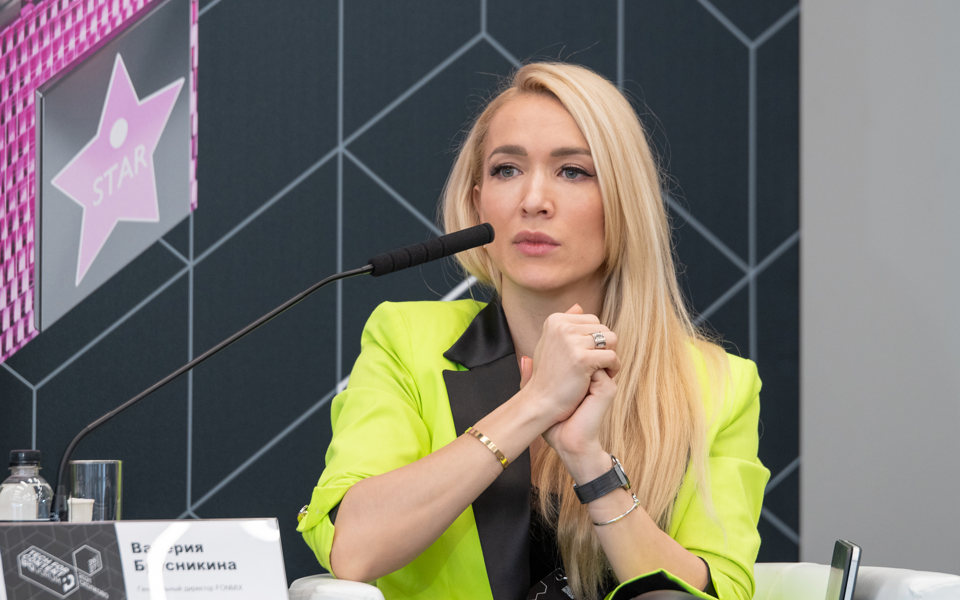The pandemic has dealt a “catastrophic blow” to Europe’s culture industry. But, despite gloomy outlook, Valeria Brusnikina (pictured) said that music and art was an international success story and can boom again, writes Martin Banks.
In an interview with this website, Brusnikina, who represents an association which, among other things, champions the rights to royalties of musicians and artists, was optimistic the industry would recover when the pandemic ends. She said: “A crisis can always present new opportunities.”
But, during a visit to Brussels this week, Brusnikina, manager of the IT projects portfolio of the IPChain Association, told EU Political Report there is an “urgent” need to reform the current royalty payment system so that musicians and artists receive proper recompense for their work. She had been speaking at a zoom conference “Pay the artists!”.
A copy of the full recording of the conference at which Valeria Brusnikina spoke can be viewed here on the Brussels Press Club TV channel.
She said: “Today, the copyright holder is dependent on a large number of market participants, from iTunes, Spotify and other services that pay royalties, to collective management societies (CMRs), which are not ready to provide detailed statistics on the use of works. In Europe, the market is more for platforms, intermediaries and users rather than rights holders and it is the content showcases that determine how much the creators get.”
She added: “The main player in this field is still the musician and he/she needs services that will allow him to independently determine who, where and under what conditions uses their creative works.” In contrast to the European market she said Russia is building a system in which copyright holders receive reports on the actual use of content and the royalty distribution is 100 percent dependent on this data.
For Europe to catch up will need changes in collective management of rights, she says, adding, “the activities of the CMRs should be based on technological digital tools for collecting statistics of musical works and phonograms usage, on monitoring the Internet resources. Based on the collected reports, digital services will make it possible to form fair distribution of remuneration.”
She added: “Rightsholders, in turn, receive solutions that allow them to monetize content and manage their rights. In Europe, solutions like FONMIX and Hypergraph, which analyze data on the use of musical works, form the most objective reporting and calculate the exact amount of remuneration to the artist, are not common at all.”
Brusnikina told this site: “Reporting is based only on radio and television as the artist receives royalties for each playback of a musical composition on the air. In other fields where artists are owed royalties, European CMRs operate on the principle of collecting remuneration and calculating payments in accordance with ratings and averaged indicators.”
The Russian media market was estimated by PWC at $694 million in 2019. During the lockdown, it fell by a record 48% to $363m. At the same time, the pandemic has intensified the trends associated with digitalization. The consumption of content on online platforms and other digital services has sharply increased in Russia. In the situation of banning mass shows, artists were forced to look for new ways to monetize their own content. If before, 75 percent of a musician’s income came from concerts, quarantine restrictions have changed the structure of revenue and now streaming platforms are sources of the main income. We believe that offline concerts will return, but streaming will remain the most important source of income for musicians in Russia, as in Europe.
Lately, 75% of a musician’s income came from concerts, but now the quarantine restrictions have changed the structure of revenue and streaming platforms became the sources of the main income. We believe that offline concerts will come back, but streaming will remain the most important source of income for musicians in Russia, as in Europe.
She says CMRs are experiencing a “crisis of confidence”, adding: “In Russia we faced this a few years ago. The problem is that musicians do not see the statistics on the use of musical compositions, on the basis of which a fair amount of remuneration is calculated. This can undermine their confidence in CRMs. This problem is being addressed with digital tools. In Russia and CIS countries, CMRs do not even have a chance to manipulate ratings or statistics because the use of works is recorded by the Hypergraph software package and the FONMIX player. The collected information is consolidated in the ‘Personal Account’ of the copyright holder, and each author can check the calculations and make sure that he has received all the remuneration he is owed down to a penny.”
She added: “We believe that over time, thanks to platforms based on blockchain infrastructure, each author will be able to manage and earn royalties for his intellectual rights without intermediaries and earn. Blockchain guarantees the safety and immutability of data, which means that the crisis of confidence is resolved purely technologically.”
It is a “model” that could be useful to other countries, she said, continuing: “Russia is developing an intellectual property management system based on the IPChain blockchain infrastructure. Services built on the basis of the IPChain network allow rightsholders and users to independently manage the rights to their creative works.
“We have researched intellectual property management systems in many countries around the world, consulted with the music industry and made sure that our model is applicable almost everywhere. We are already cooperating with Italy, Latvia, Germany, Ghana, and Colombia. Our ecosystem can work without being rigidly linked to current legislation, business processes, and the institutional landscape. Blockchain has shown itself very well in the field of intellectual rights management, since it allows you to work with large databases in the “infrastructure of trust” mode. Information about all transactions enters the distributed IPChain network in a universal, standardized form, where it is impossible to replace or falsify data. In fact, the information is owned not by a specific entity, but by the entire market at the same time.”
Brusnikina said: “Today, all of the prerequisites which are required for artists to independently manage their rights not only in the digital environment, but also offline, do exist. This opportunity, in particular, is provided by FONMIX, which can equally be used by CMRs. It is in this capacity that it functions in most countries today.”
Turning back to the ongoing pandemic, she revealed the impact this has had on the industry, saying: “We have conducted research on this topic. Due to the restriction of concert activity, the Russian music market in 2020 sank by 47.7%. In 2019, the market size was $694 million and after the pandemic, it shrank to $363 million. At the same time, the structure of income has changed. If before, streaming accounted for 18% of musicians’ revenue, after the pandemic, its share is 57.3%.”
However, the industry is gradually recovering. The average annual growth rate of the Russian music market, according to her calculations, will be 6.9% by 2024, and its volume will reach $968 million.
“However, we predict that “live” concerts will likely make up no more than 20 percent of this figure. As for the global market, according to various estimates, it has decreased by 28-34%. The reason for this, she said, is a months-long lockdown with concert bans and retail store closings. Globally, before the pandemic, most of the income (56.1%) for musicians came from streaming services, so the financial implications of the quarantine were not as dramatic for the global market as for the Russian one. A crisis can always present new opportunities for those who are willing to see them. For the music industry, it can be a growth driver. In Russia, the lockdown spurred digitalization and development of new services, and motivated rightsholders to actively engage in monetizing their content.”
Her initiative, she insists, can contribute to the growth and recognition of lesser-known artists, saying: “The global collective management system is more geared towards supporting major and well-known artists and labels. The Russian experience in creating a digital infrastructure for rights management shows that such platforms provide access to smaller teams, young and little-known artists to break through in the industry. Creative teams can raise IP-secured funding with the Co-Fi crowdfunding platform, or sell a song or samples for use in a TV show. And most importantly, the available services allow you to choose and build an independent strategy on the market, while maintaining independence, and not selling out to producers and music publishers.”
This all should matter to a wider audience, she says, because the global creative content is constantly growing and diversifying at a rapid rate.
Brusnikina said: “In the 20th century, everyone listened to a dozen or two of pop stars, for whom labels and merciless marketing and PR machines worked. Web 2.0 ushered in the DIY era in creativity. It is now possible to become popular without a label and huge marketing power. Stars are born on social media sites like VK, YouTube, TikTok.”
Brusnikina concluded: “We are living in a new era of content, which requires new approaches to production and content management. That is why influencer marketing is replacing large distribution and promotion channels, and collective management is being replaced by individual content monetization strategies.”




